Topological Low Dimensional Systems
Low dimensional conductors
Conductivity of general metals such as copper is isotropic. On the other
hand, in some materials electrons move only in the two-dimensional plane
or the one-dimensional line. Such materials are called low dimensional
conductors. Charge density waves (CDWs) or spin density waves (SDWs) exhibit
in the low dimensional conductors. They accompany with macroscopic coherence
like superconductivity and sometimes compete or coexist superconductivity.
Therefore, various coherence states such as
CDW, SDW, and superconductivity can be controlled by the dimensionality. The
low dimensional conductors are interesting stage for various quantum interference
effects. The typical low dimensional conductors are MX2, MX3 and organic conductors. Our group explores grand states by controlling
dimensionality, and aims to observe quantum interference effects using nano-meter-size
fabrication technique and topological crystals.
MX2, MX3
Chemical reactions of transition metal
(M=NbATaATi) and chalcogen (X=SASeATe)
in some conditions produce transition metal dichalcogenides (MX2)
of molar ratio 1:2 and transition metal trichalcogenides (MX3) of ratio 1:3. These materials attract us because they shows
diverse grand state due to the difference in combination of M and X and
configuration of atoms.
Figure 1 shows the crystal structure of MX3. An Atom of transition metal
(blue sphere) and three chalcogen atoms (red spheres) are accumulated alternately.
Due to the structure, this crystal shows one-dimensional crystal growing and conductivity.
On the other hand, crystal structure of MX2 is a sandwich structure of triangle lattice of atoms of transition metal
and chalcogen (figure 2). These materials have the layered structures like
graphite and shows strong two-dimensionality. |
|
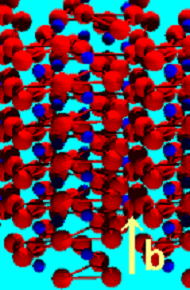
Figure 1. Crystal structure of MX3.The atoms are accumulated as M-X-M-X... along the b-axis. |

Figure 2. Crystal structure of MX
2. X atoms surround M atoms on the triangle
lattice in the ab plain, and the layers are accumulated along the c-axis.
Our group has been succeeded in synthesizing of closed MX3 crystals,
namely topological crystals the first in the world (figure 3). Furthermore, we discovered nanotubes of MX2 crystals (figure 4).
Do habitants (electrons) in the closed (no-edge)
world the ones in the usual world with edges behave differently? How do
the ones in the nonorientable Moebius strip behave? We investigated at
the viewpoint of topology.
One of the aim of our research is observation of quantum interference effect
(Aharonov-Bohm effect).

Figure 3. Topological crystals. Ring, figure-of-eight, and Moebius strip
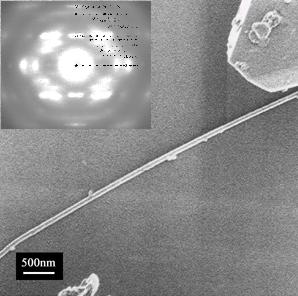
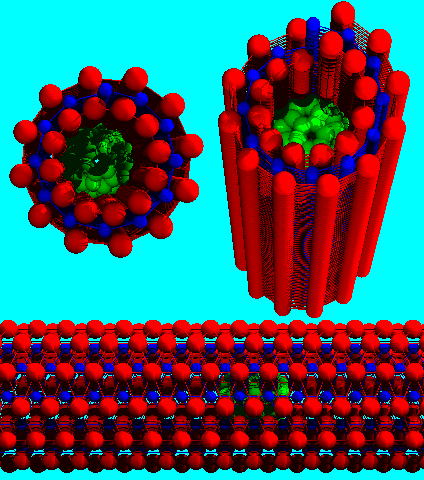
Figure 4. SEM image and TEM diffraction pattern of MX2nanotubes.
C60(Green sphere)
template produces MX2 nanotubes.
Organic Conductors
Organic conductors are charge transfer salts, of which composition between organic donor molecule and monovalent anion is 2:1.
Typical donor molecules are TMTSF, and BEDT-TTF.
p electrons beyond on the molecules contribute conduction. The donor molecules
seems complex composition. However the conduction mainly depends on the
overlap of p electrons and does not depend on kind of donor molecules well.
Since career density is very low due to the size of unit cell, which is
hundred times of that simple substances, screening of Coulomb repulsive
force between the conductive electrons becomes ineffective. Therefore,
SDW develops easier via on-site Coulomb interaction. Moreover, it has been
clearly that the superconductivity in the organic conductors is new type
superconductivity, namely anisotropic superconductivity, that is different from the ordinary BCS superconductivity.
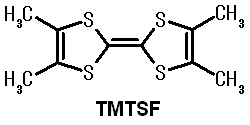
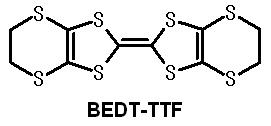
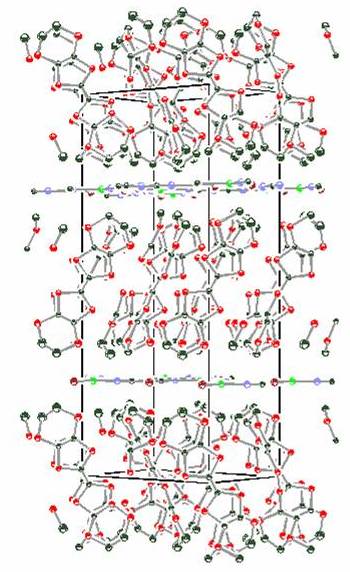
Figure 5. Crystal structure of organic conductor (BEDT-TTF)2Cu[N(CN)2]Br









